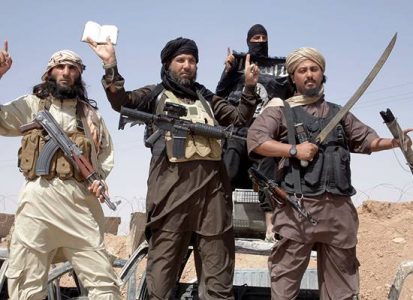
Islamic State terrorists are now patrolling nearly all of northern Iraq
The Islamic State has regrouped, rearmed and refinanced itself, and its forces are now actively patrolling nearly all of northern Iraq, according to a senior intelligence official in Iraq’s Kurdistan region.
The Islamic State, which is also known as Islamic State of Iraq and Syria (ISIS), used to control territory in the Levant that equaled the size of Germany. But its forces were pushed back by an international coalition of state armies and militias, a development that prompted several heads of governments, including United States President Donald Trump, to announce that ISIS had been defeated.
However, senior military and intelligence officials been warning in recent years that ISIS is far from defeated. In an new article published on Sunday, the BBC reports that Kurdish intelligence officials see ISIS as a resurgent organization. The report relies heavily on the views of Lahur Talabany, the head of Iraqi Kurdistan’s Information Protection Agency, which serves as the primary security and counterterrorism organization of Iraq’s Kurdistan Regional Government.
Talabany told the BBC that ISIS is today “like al-Qaeda on steroids”. The group has “better techniques, better tactics and a lot more money at their disposal” than the al-Qaeda of old, he said. The abundance of financial resources allows ISIS to “buy vehicles, weapons, food supplies and equipment”, said Talabany, adding that he is not sure about the precise source of the funds.
In addition to utilizing its strong finances, ISIS has exploited an ongoing dispute between the Kurds of northern Iraq and the central government in Baghdad, which has left large regions of north-central Iraq without an effective government presence. The militant group’s forces are therefore able to carry out daily patrols over “a huge territory, from Diyala to Mosul, which encompasses nearly all of northern Iraq”, said Talabany.
A large portion of ISIS’s forces appear to be based in Iraq’s Hamrin Mountains, which are riddled with deep caves and ravines. But the group maintains nearly 10,000 fighters all over Iraq, said Talabany, of which 5,000 operate as members of sleeper cells and another 5,000 are armed and active members of ISIS.
Source: Intel News





